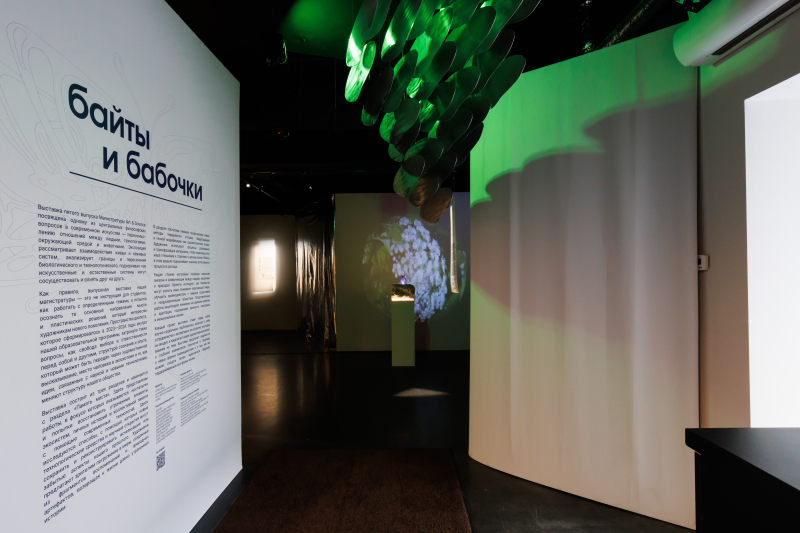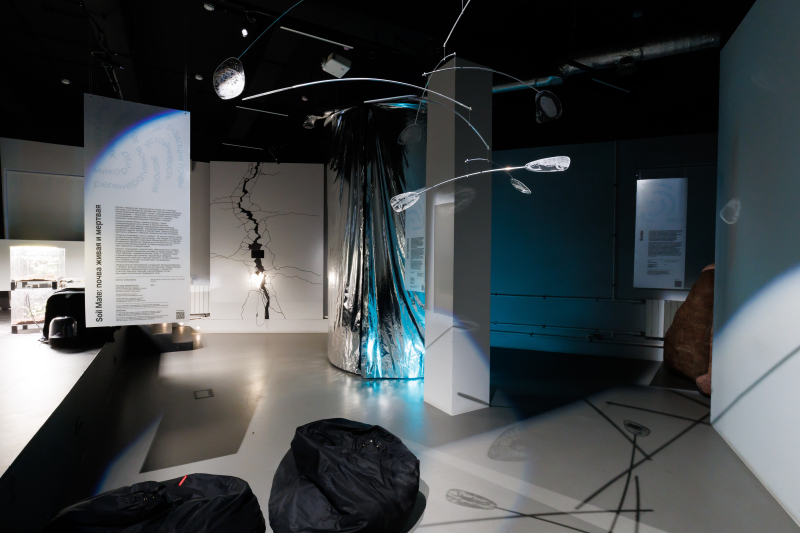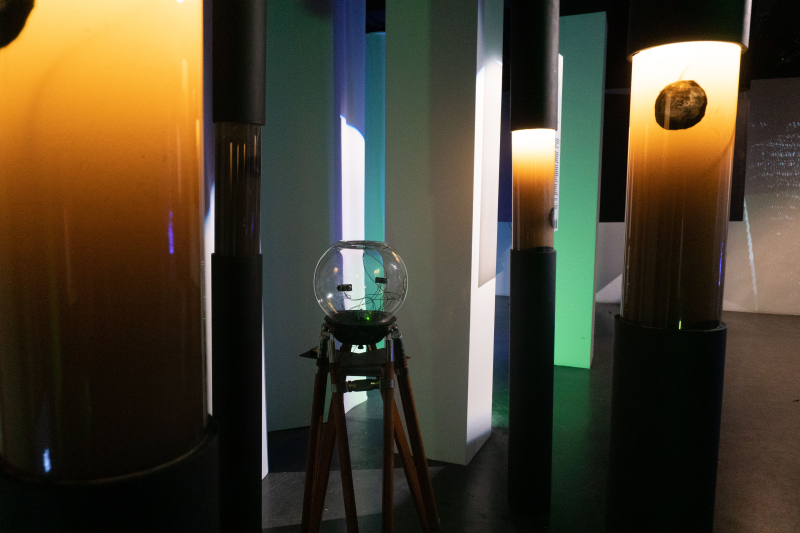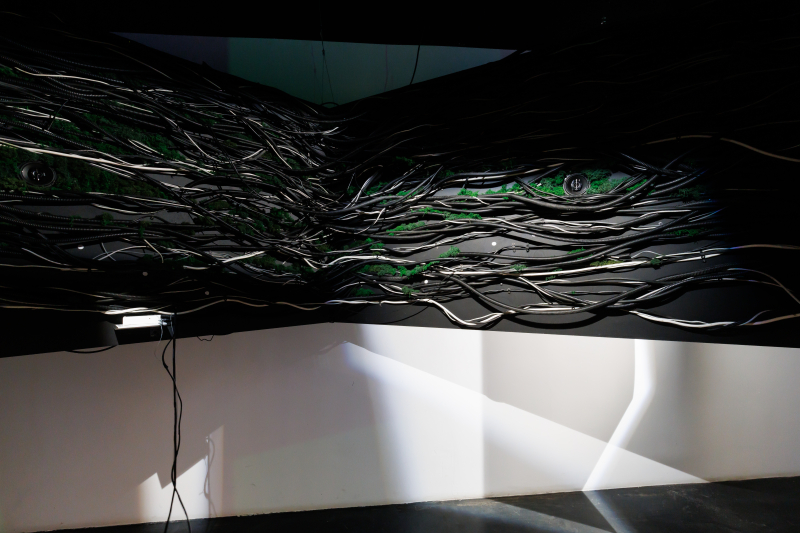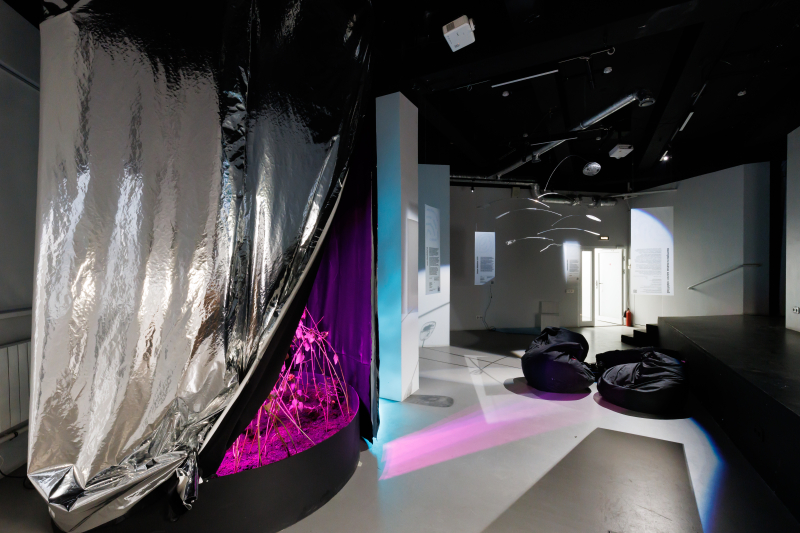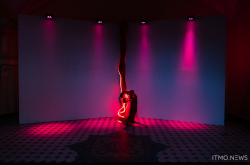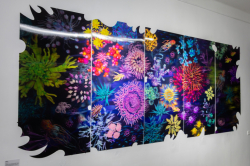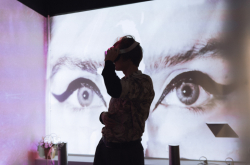Every year, graduates of ITMO’s Art & Science Master’s program exhibit their interdisciplinary works, merging science, art, and tech, at the exhibition STAGE. In 2024, the display features 16 projects – all united by the theme Bytes and Butterflies and accompanied by a packed program with art mediations, lectures, discussions, and workshops.
This year, the exhibition shines a light on one of the central philosophical questions in contemporary art — the relationship between humans, technologies, the environment, and wildlife. Considering the interactions between living and non-living systems, the display analyzes the boundaries and intersections of biological and technological systems, and highlights how artificial and natural systems can coexist and influence each other.
STAGE 2024 consists of three sections: The Memory of a Place, Aesthetics of Rot, and Fine-Tuning. The works presented in each section invite visitors to ponder the connection between technology and nature, new modes of their interaction, and how to create a harmonious future that supports all forms of life. Specifically, the exhibited works allow visitors to learn about cats’ sensitivity to earthquakes, microbial fuel cells, and perfume for insects.
“When it comes to graduation projects, we don’t simply instruct our students to work on specific topics, but rather encourage them to contemplate the essential concepts and solutions that are relevant for artists of the new generation. The context of the dialog that’s been formed within our program in 2023-2024 includes such topics as the freedom of choice and responsibility before oneself and others, the structure of cognition and experience as translated via artistic sentiment, the role of humans in the ecosystem, and the ways in which ideas associated with science and new technologies are changing the structure of our society.” shares the exhibition’s curator Olga Vad.
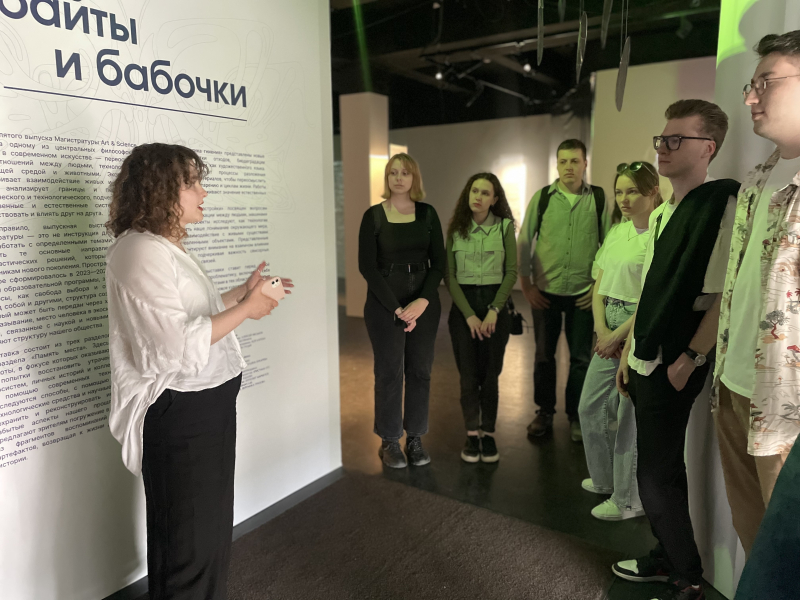
The exhibition's curator Olga Vad. Photo courtesy of the organizers
The exhibition is an interactive one, meaning that visitors can engage with objects on display – for instance, by touching a knitted texture to experience the generational memory of peoples who settled in the Far North or by entering a space simulation to learn about celestial bodies.
Among the graduates’ scientific supervisors are major Russian and international artists, curators, and scientists: Yuna Woo, Alexandra Gavrilova, Ksenia Gorlanova, Daria Demekhina, Sergey Kostyrko, Ippolit Markelov, ::vtol:: (Dmitry Morozov), Helena Nikonole, Khristina Ots, and Gray Cake (Katya Pryanik, Alexander Serechenko).
The works on display are authored by Art & Science Master’s graduates: Anna Bachinina, Kira Gorshkova, Daria Grigorash, Sofiia Egorova, Kseniia Kasoian, Veronika Kislova, Irina Koroleva, Daria Krivaia, Polina Kudinova, Ekaterina Kulakova, Aleksandra Mikhailova, Diana Nemikhina, Aleksandr Pak, Polina Pakhomova, Anastasiia Sadovnik, Elena Sokolova, Anna Stepanova, and Aleksandr Shchos.
You can visit the exhibition at the AIR space on Birzhevaya Liniya 16 until June 22. Follow the Telegram channel of the Art & Science Center for the schedule of accompanying events and go here to get your tickets to the exhibition and any lectures, discussions, workshops, or performances you might be interested in (both links in Russian).
